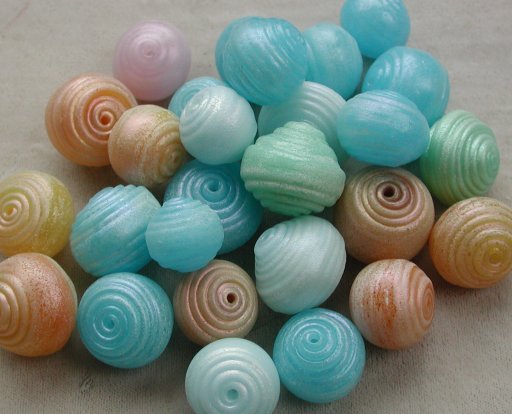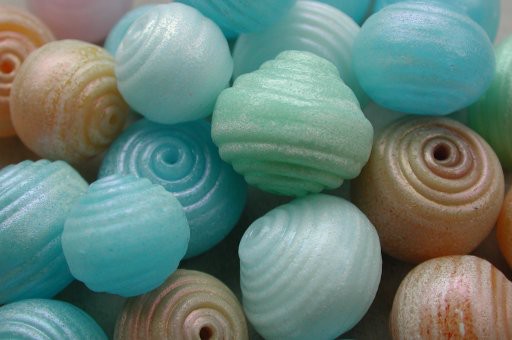Effetre glass is sold in a number of series, of which the transparents are 0xx, cool opaque colors are 2xx, and warm opaques (for the most part) are 4xx (one notable exception being gold ruby, which, technically, is transparent.) In between are the 3xx and 5xx, opalinos and alabastros (and no, I don't recall which is which.) These semi-opaque colors come mostly in pink, yellow, green and blue (and one very pretty orange, ‘cornelian’) and are distinguished by their often incompatibly higher coes, and a distressing tendency to boil.
In other words, they're a pain in the neck, and I'm sick of them. So, true to form I decided to try ‘using the glass up’. (Why oh why can't I just take this crap to my local glass bead meeting and sell it for half off? Or even put it on Ebay? But noooo...) These antiques, rolled in baking soda and pixie dust, are the results of my efforts. Half way through the process, I realized they were good candidates (i.e. opaque and relatively large, ranging from 14–22mm or so) for chiming beads, and started making them that way.
The idea for these beads came out of some of some beads I saw in Stevi Belle's trays, when I took a class. Lots of beadmakers let the ridges show and go for rather organic shapes in their hollows. One doesn't have to strive for the perfectly round bead every time. Instead I strived to lay the coils down in a perfectly even fashion. Ironically, the failures got made into curliQs
These beads were the result of such ruminations. Effetre glass, baking soda, pixie dust. April? 2005.
Unless otherwise noted, text, image and objects depicted therein copyright 1996--present sylvus tarn.
Sylvus Tarn
